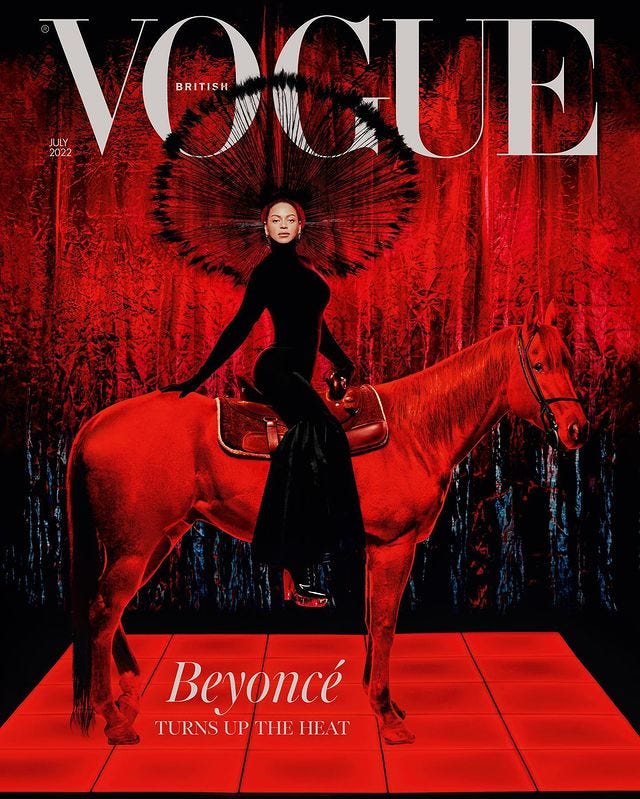Beyoncé, Edward Enninful, and Anna Wintour
While Enninful basks in the glory of a Beyoncé cover story, Wintour takes selfies with Kim Kardashian.
Thank you for subscribing to Back Row, the fashion and culture newsletter that says what other publications won’t. These posts are free to read, but you can support my work by purchasing a copy of my new book ANNA: The Biography, which makes most excellent company on a beach. Subscribe if you are new here to get more Anna-lysis (*PATS SELF ON BACK*), commentary, and Q&As delivered to your inbox around twice a week.
Some of the social media conversation around Beyoncé on the cover of the July issue of British Vogue has unsurprisingly fixated on how Anna Wintour must be upset to not have gotten the story. I get why this is a satisfying narrative. While Wintour is at Condé Nast HQ taking selfies with Kim Kardashian, who was allowed to go hold court there to shill her expensive and unnecessary skincare products, British Vogue editor-in-chief Edward Enninful is still basking in the glory of an ambitious cover story that both featured one of the most famous women on the planet and provided some of the only clues the public got about her new work. If the company one keeps is an indication of who’s on top — and in fashion, it generally is — which Vogue editor would seem to be dominating the summer so far?
Whenever a British Vogue cover drops there’s usually some internet chatter in this vein — about how British Vogue is way better and Anna Wintour could never, or whatever. But where people like to project envy or rivalry, there may be nothing more to this than two editors simply serving two different markets while being judged in the same online echo chamber.
The Beyoncé cover story was another win for British Vogue, sure, and, since it was the only real tease we got about Renaissance — her first solo studio album in six years — took on even more significance after the “Break My Soul” single came out Tuesday. With Beyoncé maintaining her famously distant approach to celebrity, the signature of which is not granting interviews, fans were left to mine the British Vogue photos for clues about her new music. Beyoncé used the photos prominently in her own social media teasing the release and currently has them all over her website, so it seemed like it was always meant to be a pretty important part of the early marketing efforts. There are absolutely worse things for a fashion magazine these days than being a crucial part of the release of new music by one of the most celebrated and adored artists of our time.
The shoot itself is a maximalist nightclub fantasy, Beyoncé riding a horse on the cover, perched on a disco ball and enshrouded in gold Schiaparelli couture on the inside pages. The online masses seemed to enjoy the images, styled by Enninful. They certainly stood out on social media the way Beyoncé always does and maximalist fashion naturally tends to. Minimalism is a hard sell to an audience consuming photography on a cellphone, which we see each time Maria Grazia Chiuri’s subtle Dior collections get dragged on social media while Daniel Roseberry’s outlandish Schiaparelli collections are wildly praised.
Keep reading with a 7-day free trial
Subscribe to Back Row to keep reading this post and get 7 days of free access to the full post archives.






